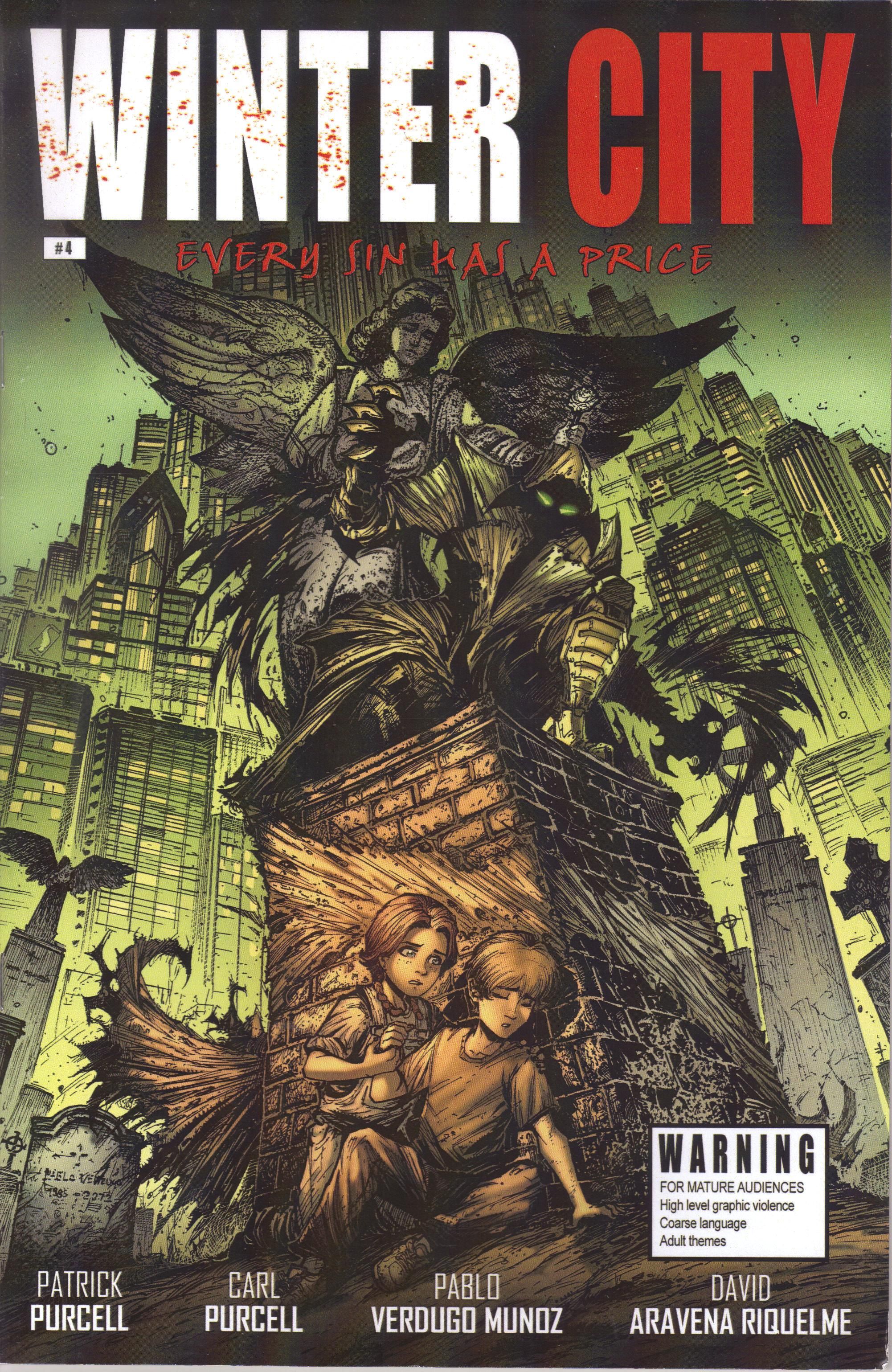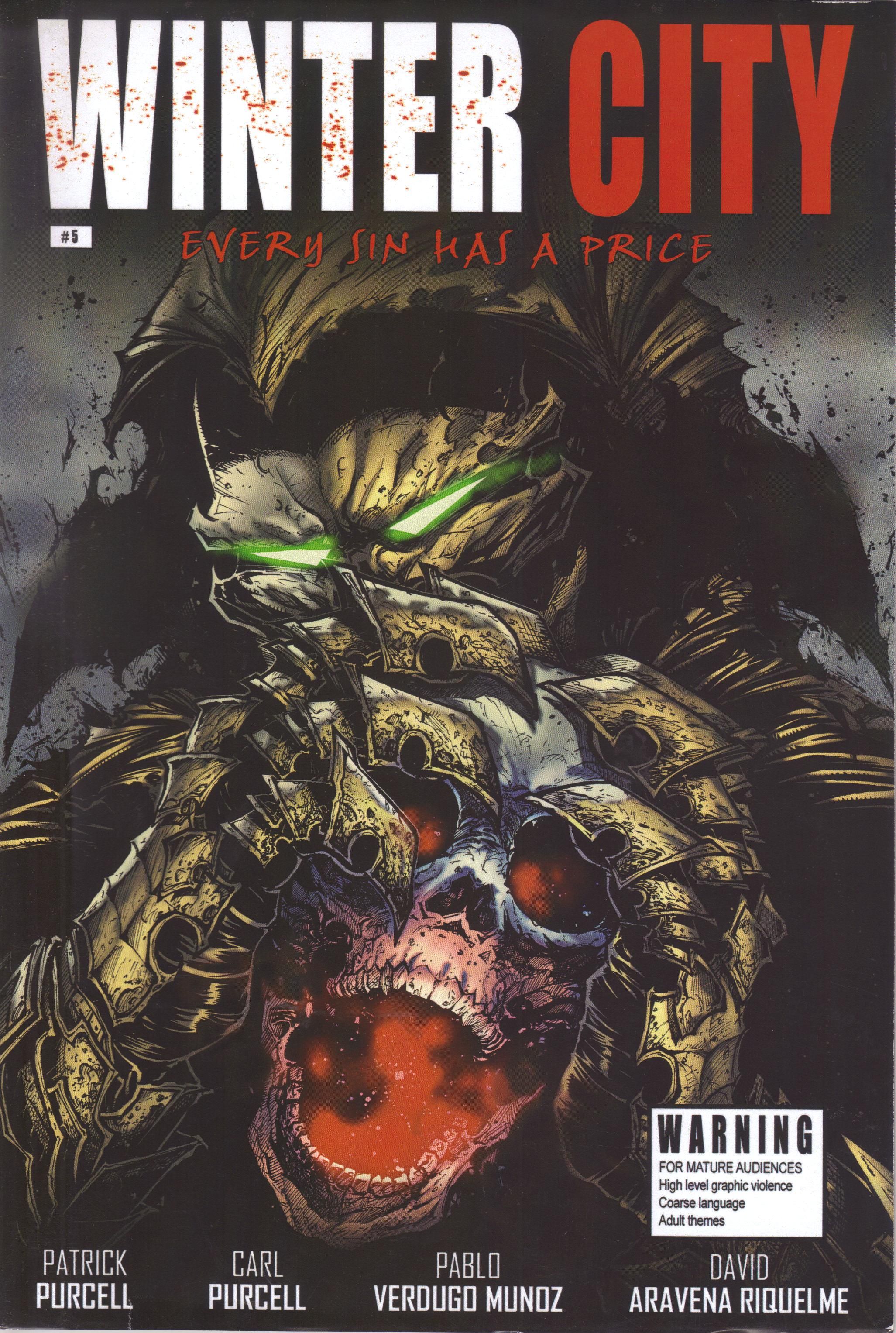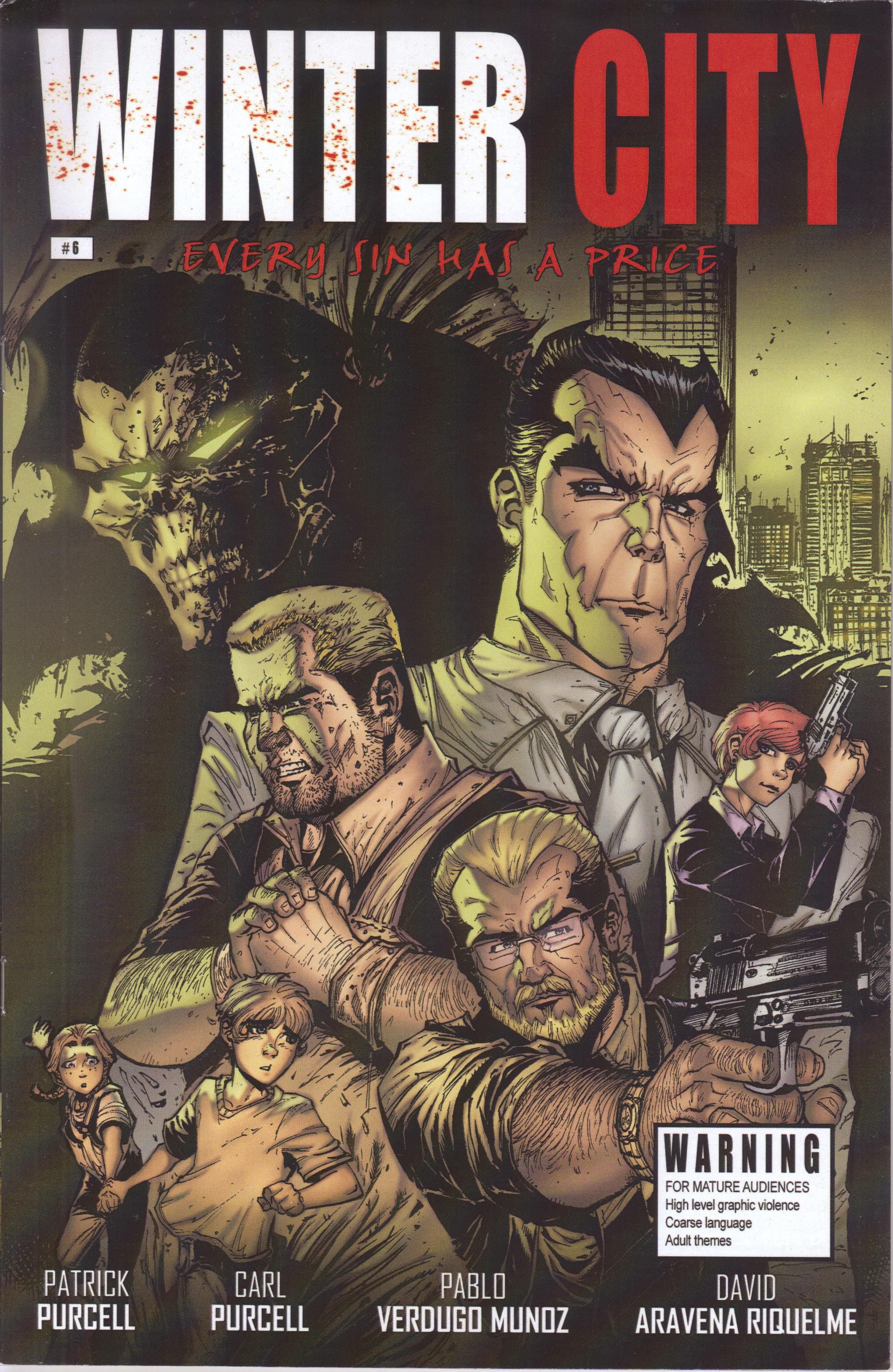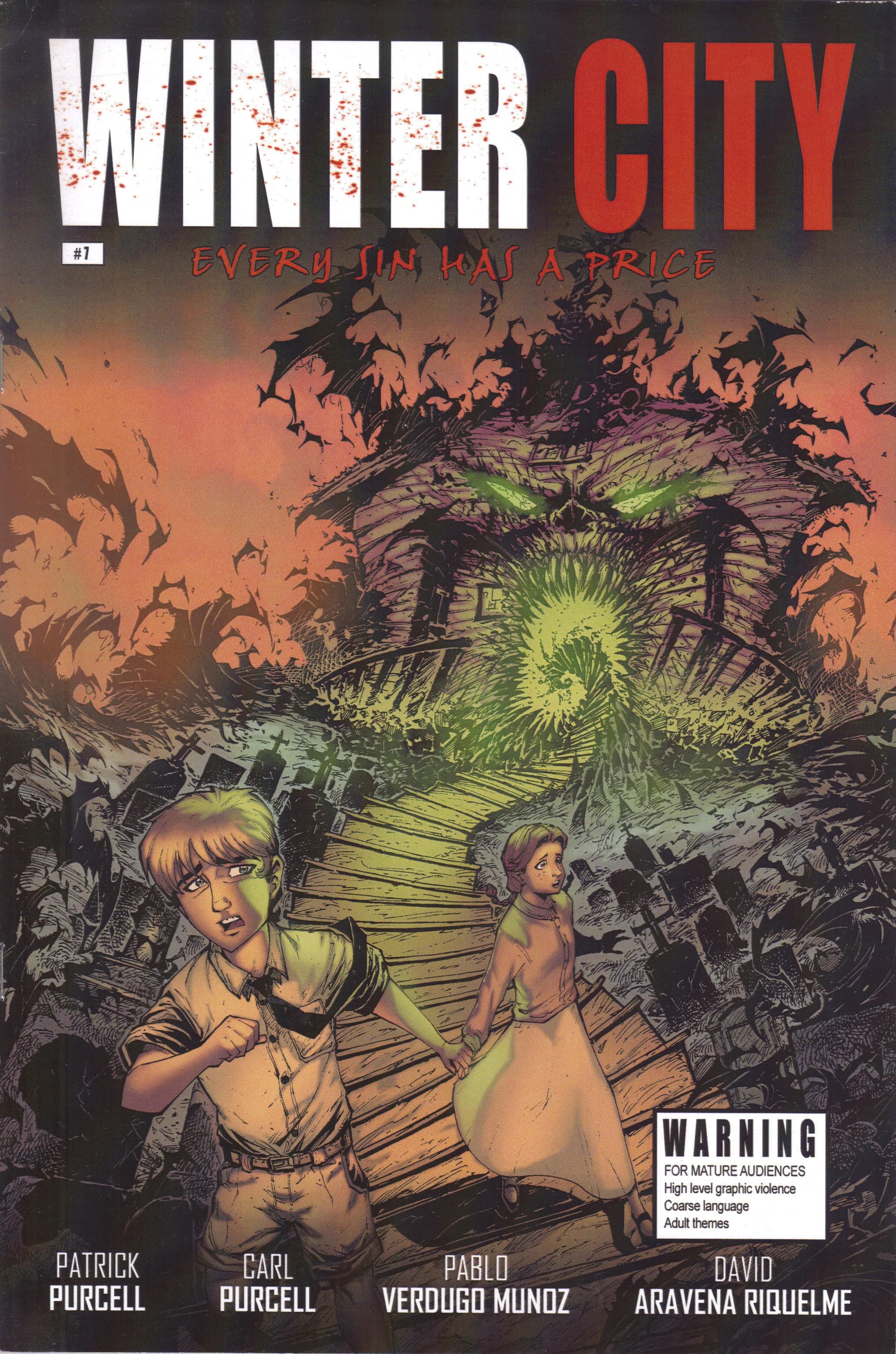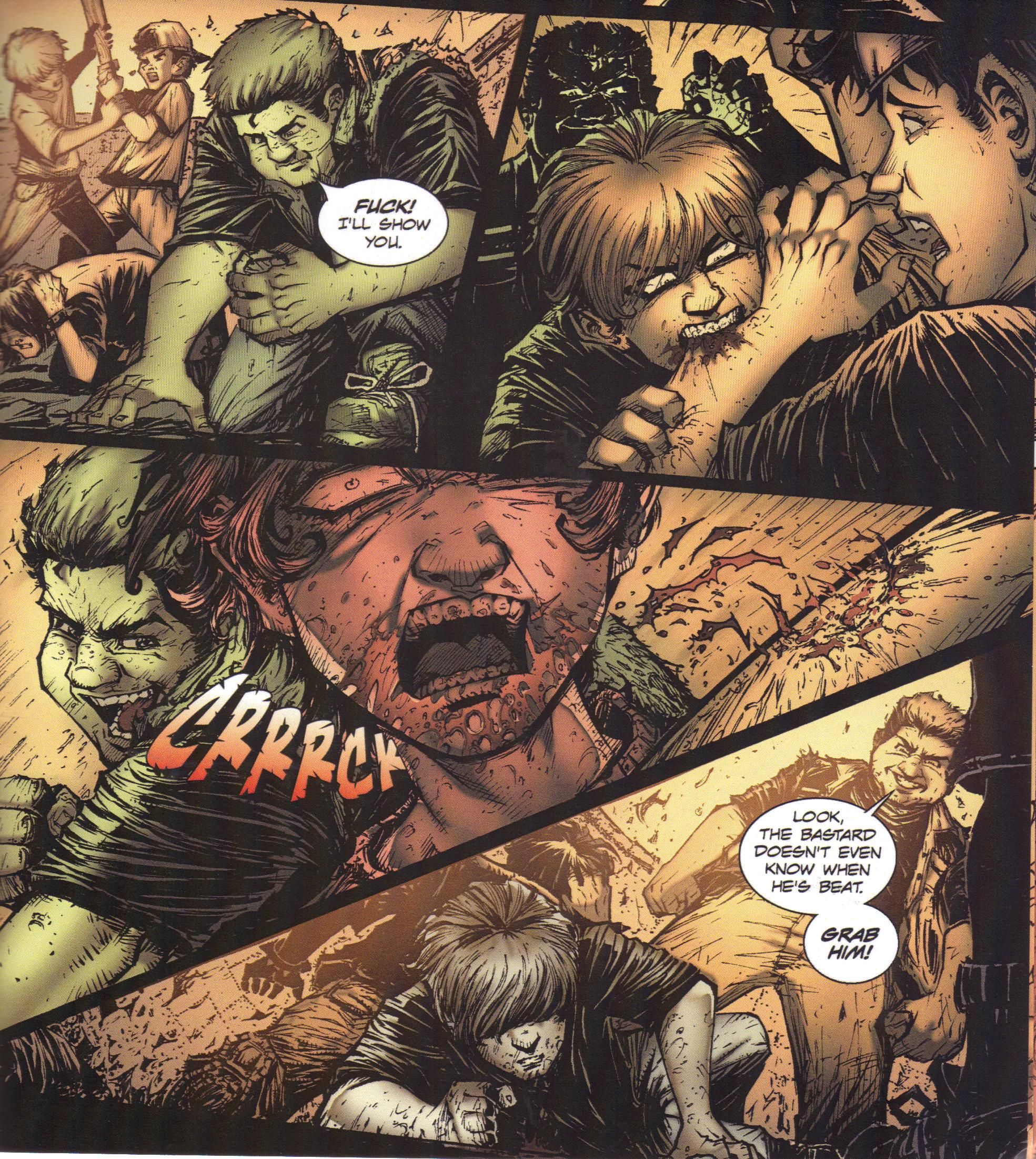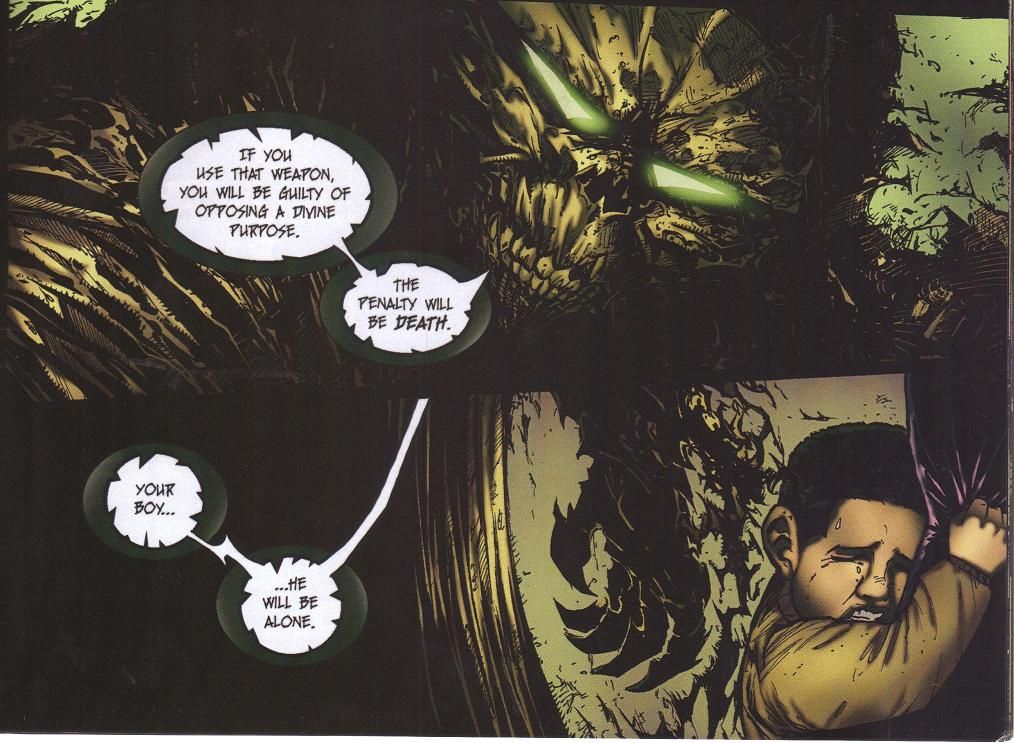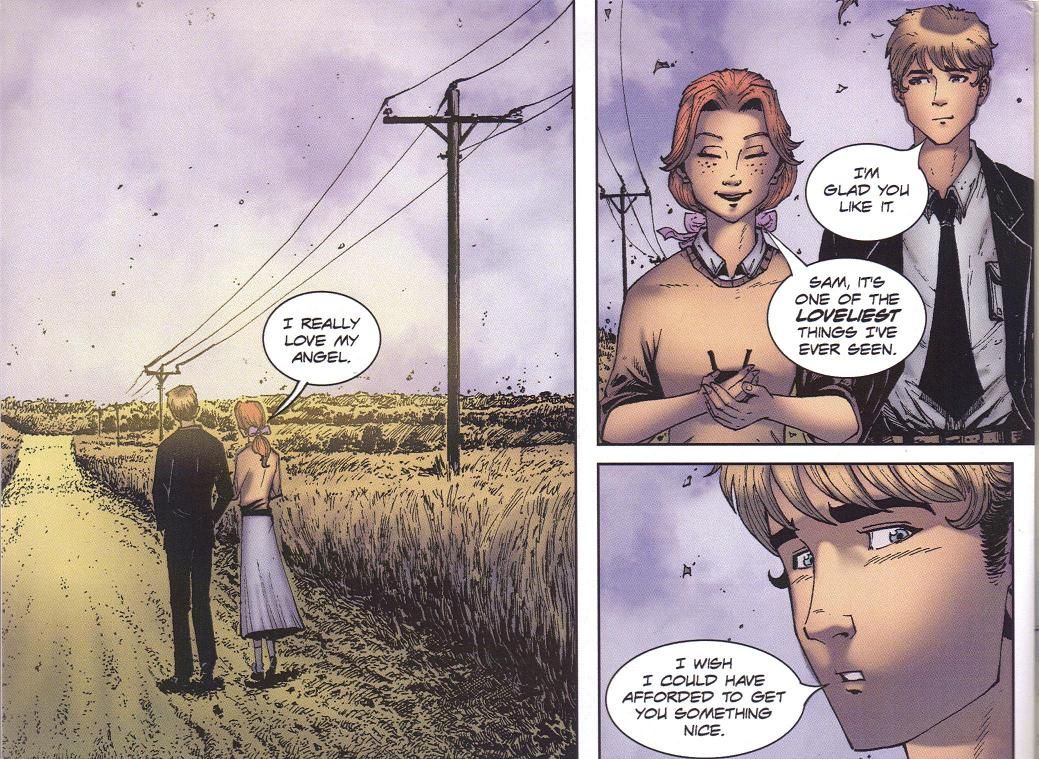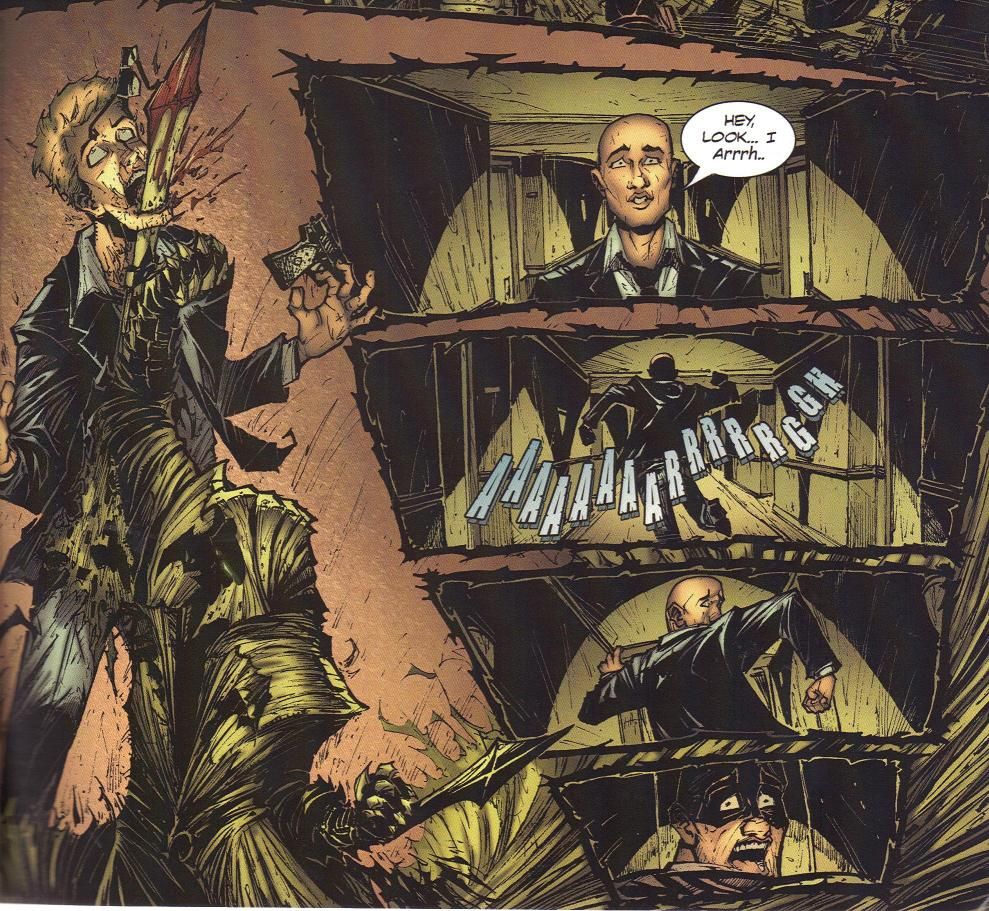"Strapped in the chair of the city's gas chamber; why I'm here I can't quite remember"
Back in July 2012, I reviewed Winter City #1-3, which Patrick Purcell, the book's creator, co-writer, and letterer, was nice enough to send me. Recently he sent me the next four issues of his opus, and I'm perfectly happy to review them, too!
Winter City is co-written by Carl Purcell, drawn by Pablo Verdugo Muñoz, and colored by David Aravena Riquelme. Each issue costs $4.99, and you can get it in print or digitally - just go to the web site!
When I reviewed Winter City #1-3, I had some issues with it, although I did appreciate a lot of it, too. I kind of have the same issues with these issues, which isn't surprising, I guess. The Purcells' story isn't bad - a vigilante is killing very specific men, and in these issues, we learn more about why these particular men are being targeted. I'm not going to get into it, but it's not a bad scheme, and the fact that we know about it before the police doesn't make the fact that the cops figure it out any less impressive. As I noted when I reviewed the first three issues, I dig police procedurals, so it was nice to see Detectives Daniels and Harvey (Harvey finally gets a first name in issue #6 - it's Janet) puzzle some stuff out. Daniels remains the lead character, so of course he's going to get most of the screen time, but the Purcells have done a decent job making their professional relationship a good one. They're far more interesting than the vigilante, who spouts a lot of religious mumbo-jumbo to justify slaughtering the bad guys and doesn't have much else to say.
In the present, the main action in issues #4-6 takes place in an apartment building, where the vigilante has gone to dispatch one of his victims. He gets caught in there by the police, so a good deal of the action deals with him trying to escape. He does, naturally, and he grabs Detective Daniels for good measure, leading to issue #7, in which Daniels and the vigilante argue with each other about the vigilante's methods.
The Purcells have made it clear that the vigilante is not supernatural, or at least he wasn't when he was a kid, so I'm more curious about how he became the bad-ass he is today than the fact that he is a bad-ass. The case that makes him kill is decent but not too compelling, so it's more about how he turned into this person (and we get a clue about it in issue #7, but that's all it is).
Throughout the series, the Purcells have been flashing back to the life of Sam Winters, who will turn into the vigilante (we still don't know this from the comic, but the web site tells us that it's him). Sam, as we saw, was left at the age of seven with his stern uncle by his uncaring mother, and in these issues we see him as a twelve-year-old and a sixteen-year-old. He gets beaten up by bullies, meets a nice girl who takes him to a fundamentalist church with a real fire-and-brimstone preacher, and by the time he's 16, he's gotten much closer to Casey - the girl - but the bullies are still lurking. We discover in issue #7 that Casey is dead (in the present, of course), which again goes some way to explaining what happened to Sam. Sam's life, like a lot of the book, is somewhat stereotypical, but the Purcells are able to change the narrative just enough that it becomes compelling. Sam fights the bullies but still gets beaten, and when his uncle finds out, we get some nice insight into why his uncle is so hard on him. When Casey suggests to Sam that he come to church with them, we think the worst, but then we think that Casey's fairly normal, so maybe it won't be too odd. Muñoz draws the preacher so that he kind of looks like a hippie, but it soon becomes clear that he's really into the darkest parts of the Book of Revelations.
It's also interesting that Sam seems enraptured by his words without seeming to change too much, at least by the end of issue #7. The sterotypical elements of Sam's past are obvious, but it's nice that the Purcells tweaked it a bit so that Sam's situation becomes more interesting, which will presumably make the rest of his evolution more interesting, too.
Muñoz and Riquelme continue to do a nice job on the artwork. It's not my favorite style, but Muñoz is doing a nice job making Winter City a grimy, terrifying place and is contrasting it nicely with the rural area Sam grew up in. The violence is horrific and disturbing, and Muñoz doesn't flinch from showing how brutal using a heavy blade on people can be. As ridiculous as the cloak the vigilante wears, Muñoz does a fine job turning it almost into a living thing, as it seems to have a mind of its own at times. Even though the vigilante doesn't seem to be supernatural at all, the way Muñoz swirls it through the pages makes the vigilante seem much eerier. He does some nice things with the inking, too - the vigilante and the city are very rough and harsh, while the flashbacks are a bit softer, although Muñoz roughs things up when he has to. The fight between Sam and the bullies is brutally drawn, giving us a good idea of how nasty kids can be. Munñoz appears to be influenced by manga, as his faces - especially Casey's and Sam's - are stereotypically manga-ish, with large eyes, small noses, wide cheeks, and pointed chins. However, this works in his favor, as the kids' faces look far more innocent when they're drawn this way, especially in contrast with the adults', whose faces are thinner and more severe. I'm not sure if that's what he was going for, but it works well. The fire-and-brimstone preacher is presumably supposed to look like David Koresh, but it also works in context, because Muñoz is confounding our expectations a bit by making him a bit more laid-back ... at least until he speaks.
Riquelme, meanwhile, continues to drench the flashbacks in sepia tones, but he also shades things a bit darker when they need to be, mirroring the dark things that happen to Sam as he gets older. His choice to use a lot of green in the present is interesting, as it makes Winter City a spooky, hellish place without being too obvious about it. The green makes everything feel like it's being lit by sickly neon, and the fact that it's reflecting off of snow makes it feel more chilling and sad. Winter City is not a pleasant place to live, and the coloring helps create this mood.
I really appreciate that Patrick Purcell sent these issues to me. I still don't love Winter City, but I always love a self-published comic from creators who love what they do and work hard to make this a reality. Despite my reservations, I do enjoy reading the series, because it is entertaining despite trafficking in some clichés. As we've gotten further into the series, the general plot hasn't become any less clichéd, but what has become better is the characters in the series, as the Purcells have done more with them. While I don't love the style of the art, Muñoz is really doing a good job creating both the city and the small town where Sam grew up, and it's pretty impressive how well he tells the story. Winter City is a decent comic, and while I wish it were better, it's still pretty neat to read.


